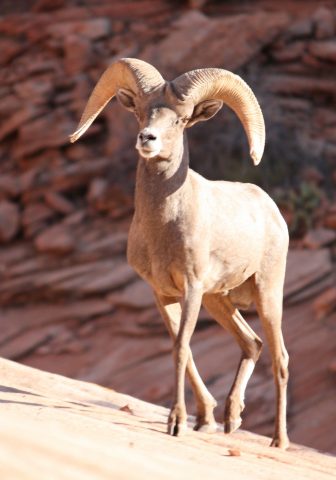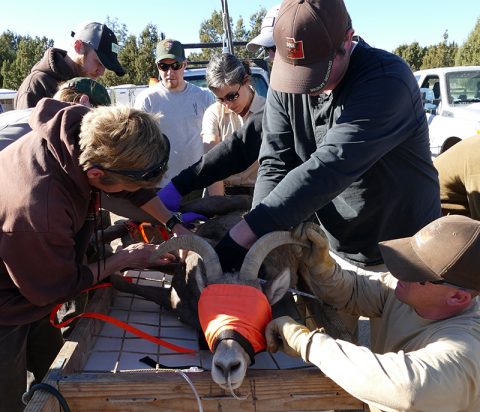Protecting Zion’s Bighorn Herd
Rangers continue to monitor for signs of disease
The Bighorn Sheep is an iconic figure that instantly conjures images of the high-desert canyons in and around Zion National Park. Although majestic and capable in the wild, these animals are extremely susceptible to respiratory disease. With additional monitoring and equipment, Zion’s rangers hope to continue to find new ways to protect these sheep and ensure the herd remains viable. Those who choose to contribute are committing to the preservation of these amazing creatures.
An Update from the NPS Program Manager Janice Stroud-Settles
Zion’s bighorn sheep continue to do well after the discovery of respiratory disease a year ago. The bighorn sheep technician (Brianna Johnson) and several volunteers have continued to monitor the herd closely for symptoms associated with the pathogen Mycoplasma ovipneumoniae (M. ovipneumoniae). Similar to last year during the late summer/early fall, many bighorn are displaying mild symptoms (coughing, head shaking, nasal discharge) but we have yet to confirm any mortalities that can be attributed to this disease. Since the onset of this study in November 2017, 57 bighorn have been collared within the Zion herd (36 inside Zion National Park and 20 outside). Thirteen collared animals have died (10 mountain lion predation, 2 falls, and 1 unknown cause).
In August, Brianna Johnson began her Master’s degree program at Utah State University; Brianna’s research thesis will focus on Zion bighorn sheep and specifically will:- Characterize survival and pattern of clinical signs displayed by adult bighorns following a low-severity M. ovipneumoniae introduction event.
- Characterize lamb survival following the introduction of an apparently a low-severity M. ovipneumoniae strain.
- Conduct baseline profiling of group mixing dynamics within the Zion bighorn herd to determine:
- The extent to which the population substructures into discrete nursery groups during summer, and patterns of direct contact within those groups.
- The relationship between ram dominance rank and movement patterns (a critical question for desert bighorn sheep west-wide for which extremely limited data exist). Background information on these mixing dynamics may prove valuable for targeting management interventions, should lamb survival be low, in the disease event’s aftermath.
While Brianna is away at school, a full-time dedicated bighorn volunteer is: (1) monitoring ewe breeding status in order for us to estimate lambing dates; (2) identifying and monitoring individual uncollared breeding rams to determine ram hierarchy; and (3) continually monitoring the health of collared individuals. Additionally, preparations are being made for a mid-November sheep capture (via ground darting) in order to re-deploy 11 GPS collars.


